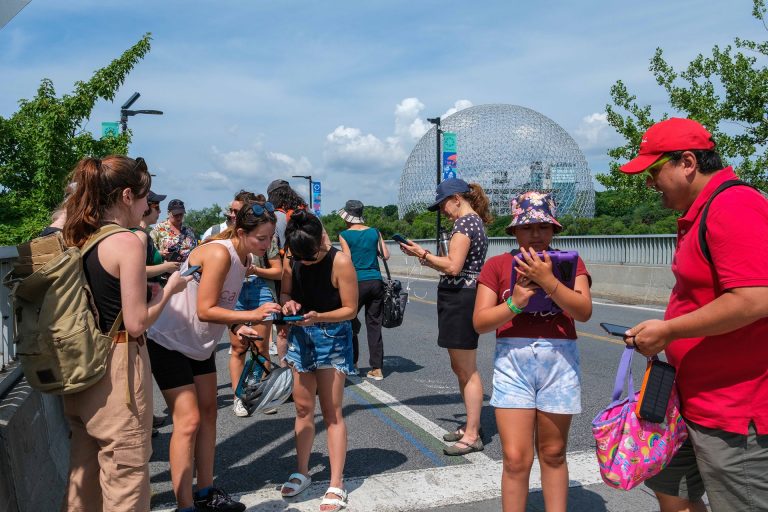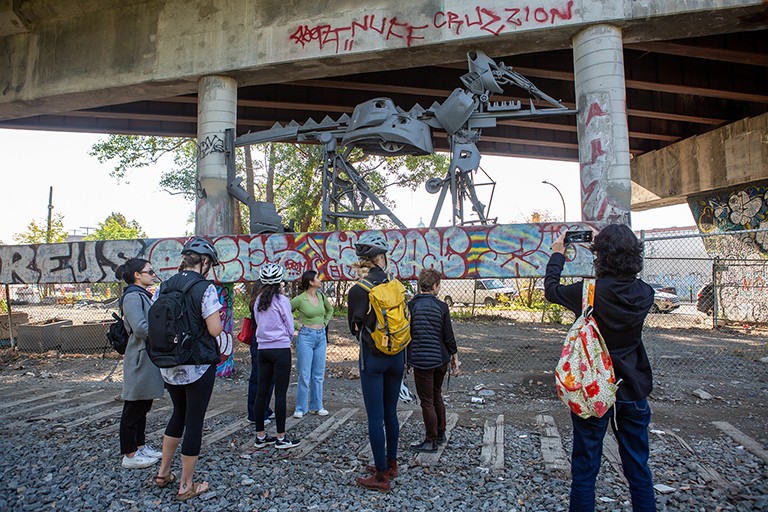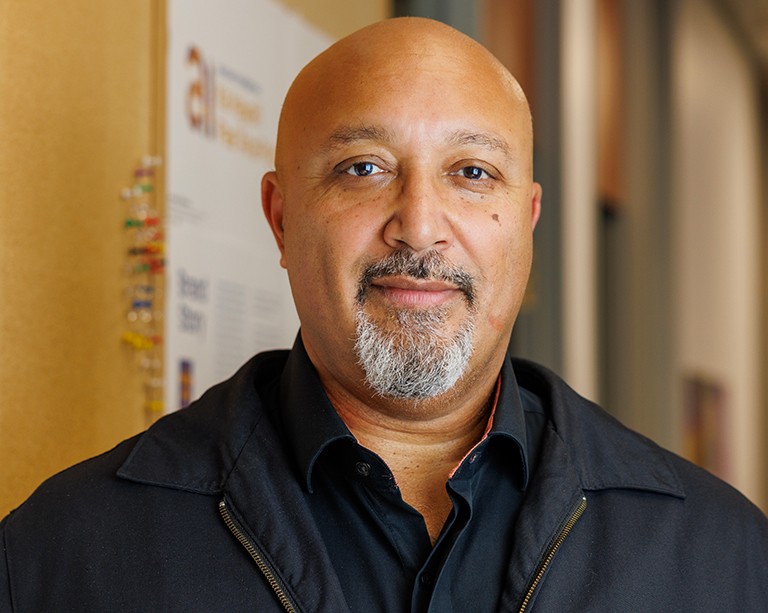Concordians are re-storying city sites through the lens of waste

In an age dominated by screen time and online encounters, Concordia professor and documentary creator Elizabeth Miller is inviting Montrealers to get outside. Specifically, she suggests we hop on a bike or walk to explore the overlooked infrastructure of urban life and its connection to waste.
Her latest project, the WasteScapes app, offers a guided yet flexible augmented documentary tour of more than 60 waste-related sites across Montreal. The project was co-designed with collaborators MJ Thompson, associate professor of art education, PhD student Isabel Boucher, and Kim Grinfeder, a professor of interactive media at the University of Miami.
Free to download, the app encourages users to visit familiar locations with a new lens. It reveals guerilla art installations made from salvaged materials, aging sewage systems and massive underground infrastructures that are mostly invisible to the public eye.
“This is a great way to discover the city. So few of us understand the waste and water systems that we depend on,” says Miller, who teaches in the Department of Communication Studies.
“We wanted to create something that would invite people to move through the city with curiosity and critical thinking — something playful but rooted in real stories about urban sustainability.”
To immerse people in Montreal, WasteScapes requires users to physically visit locations to unlock their content — audio stories in both French and English, historical and artistic insights and photographic documentation. This makes the experience reflective and grounded in place. The app was designed with a wide audience in mind: students, educators, environmental advocates, urban explorers and even casual weekend cyclists.

‘We’re trying to make diverse forms of waste visible’
Each location unveils a new perspective on what we consider waste, how it is managed and how we come to value the objects, systems and places in our lives. One tour takes participants through Frédéric-Back Park, a site transformed from landfill into a model of ecological rehabilitation. Another route reveals diverse waste sites along the Lachine Canal’s layers of industrial history. Other sites explore how Concordia itself functions as a living lab for waste reduction and reuse.
“We’re trying to make diverse forms of waste visible — from compost to sewage to industrial and architectural waste — their histories, politics and possibilities,” Miller says. “By being in the space, listening to the voices of those who work with or think about waste, we can see the city and our relationship to waste differently.”
For those unsure where to start, the WasteScapes website features curated cycling and walking tours — complete with downloadable PDFs — that range from one to three hours. Routes such as “Scale of Waste” on Île Sainte-Hélène or “Waste Values” in Mile End offer thematically driven experiences along accessible paths. While these routes aren’t embedded in the app, they complement it, giving structure to the urban adventure.
Educators can also integrate the project into their teaching. The WasteScapes website includes downloadable classroom prompts, making it easy to build site visits into curriculum around sustainability, infrastructure or civic engagement. The app and its associated materials are available in English and French, ensuring that more Montrealers can participate in this unique project.
Miller’s interdisciplinary and participatory approach has been a hallmark of her career, blending media, activism and public engagement.
She also highlights collaborations with experts and colleagues including Monika Gagnon who developed a tour that is showcased in the app called “The expo67 AR|chives.” This tour guides users to the remnants and traces of the structures designed for Expo 67 across Île Sainte-Hélène and Île Notre-Dame and raises questions about archives, histories and architectural waste.
Ultimately, WasteScapes encourages people to reflect not only on what we throw away, but on how cities themselves are constructed, maintained, re-storied and reimagined. For Miller, it’s a call to get outside, slow down and see the familiar with fresh eyes.
Download the WasteScapes App to discover the hidden stories of Montreal’s waste systems.
Explore Concordia’s Department of Communication Studies.




